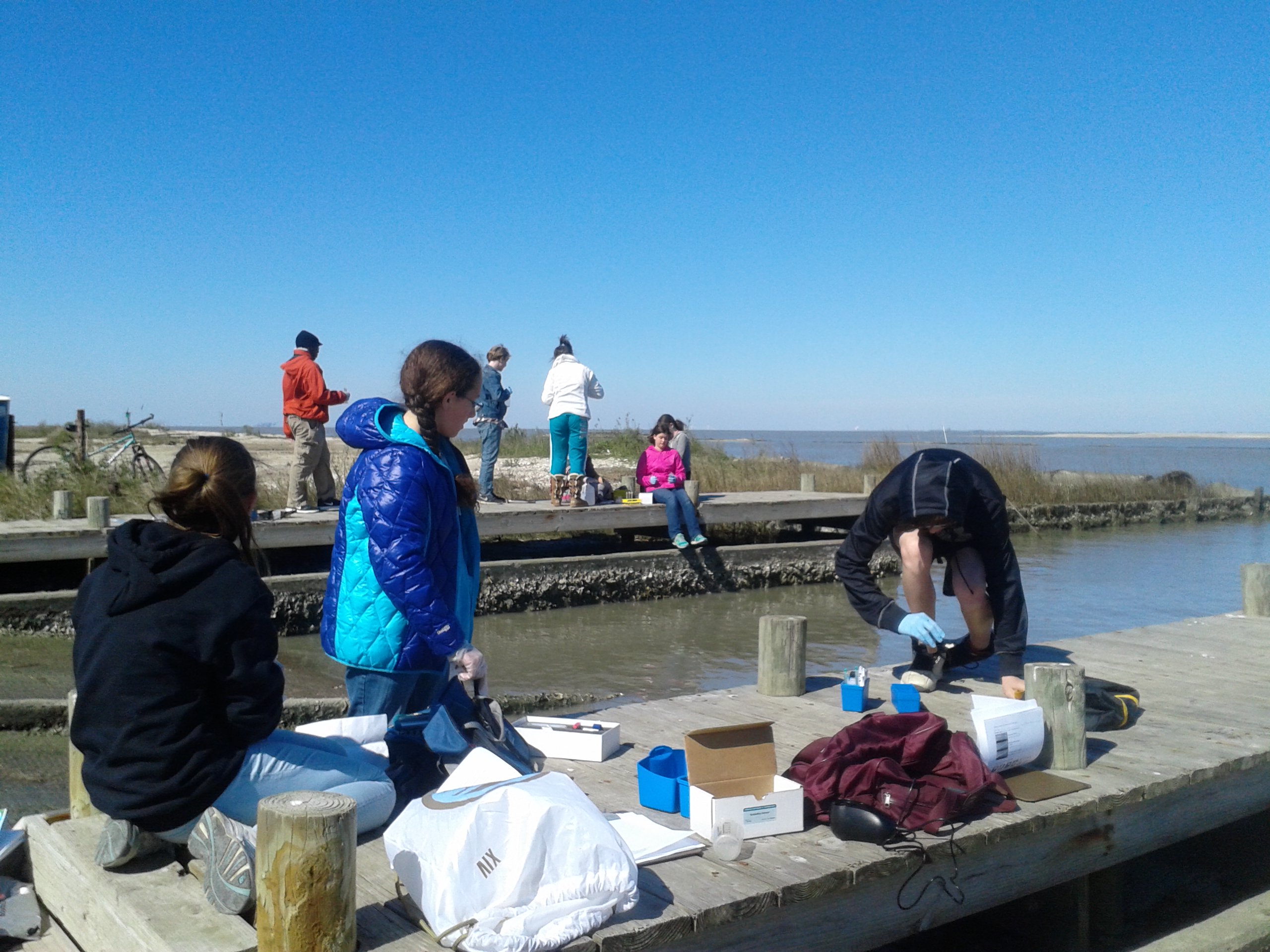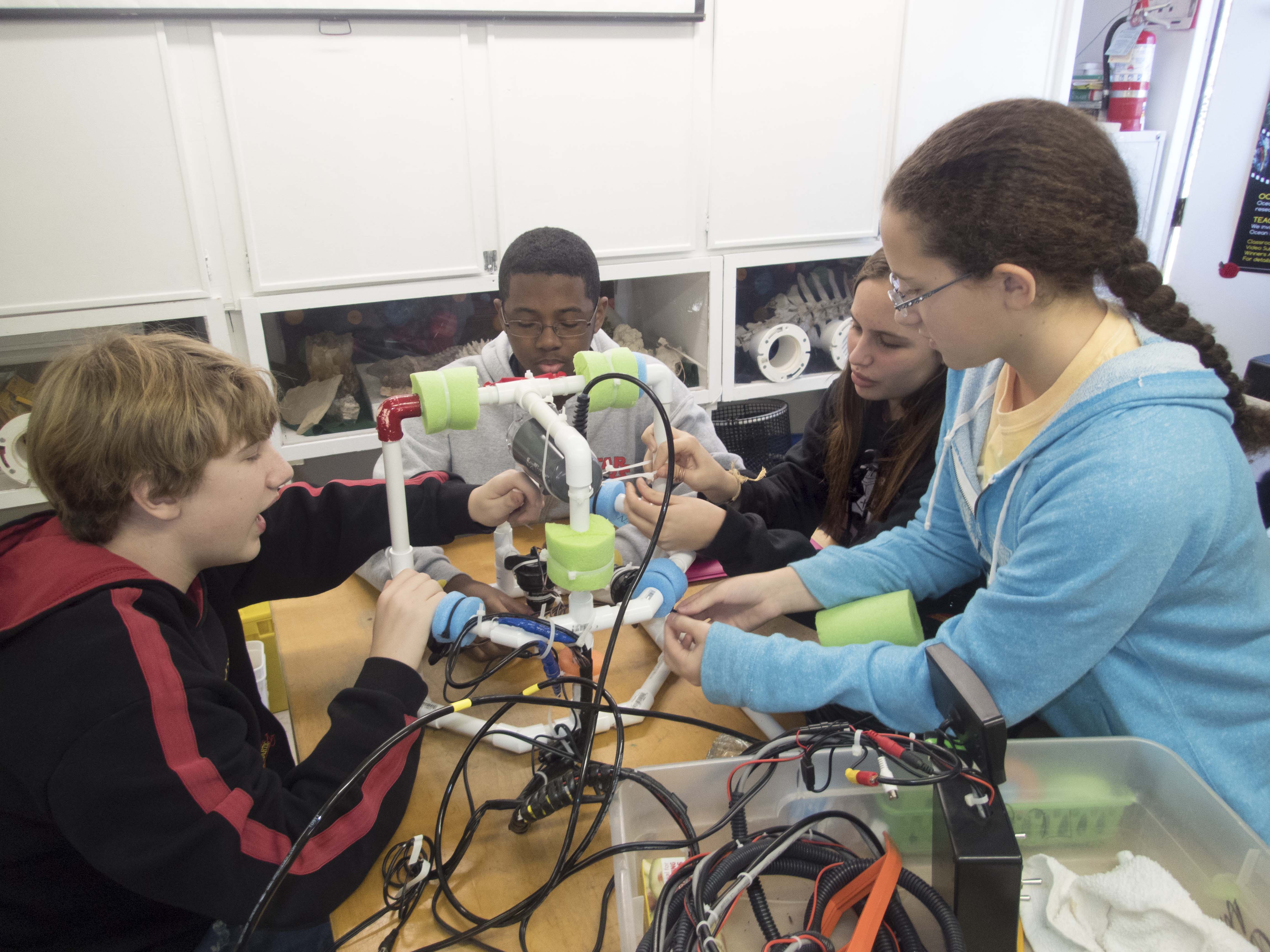20 April 2016
What do students in coastal AL, TX, & GA all have in common? We’re all part of the same ocean!
Posted by Shane Hanlon
By Lollie Garay
In 2007 I was chosen as a PolarTREC teacher assigned to an oceanographic expedition to Antarctica. It was that amazing voyage that teamed me up with marine scientist Dr. Patricia Yager (UGA). Our successful collaborations have produced many educational outreach presentations, lessons, and published papers. Having experienced first-hand the important work of marine scientists, I knew that I needed to bring this type of experience to my middle school students. Using Dr. Yager’s work as a model, we developed a project to immerse students in research-based studies of local watersheds and coastal oceans to experience the process of science. The SMORE (Students Monitoring Ocean Response to Eutrophication) was born!

Onsite investigations allow students to collect authentic data.
Our challenge was to fit the science research into the required components of state curriculum and the national Next Generation of Science Standards. Meeting the objectives set forth in the 7 Principles of Ocean Literacy to develop understanding of the ocean’s influence on us and human impact on the ocean was key, our goal was to create critical thinkers who will face changing Earth environments.
In 2011 we were awarded a Toyota Tapestry Excellence in Environmental Science Education Grant. To model the collaborative scientific efforts, we formed a team of students and teachers from three different coastal environments to conduct tests and collect data, looking for evidence of cultural eutrophication (i.e. human activity and its impact) on their coastlines.
The teams of classrooms from Georgia, Alaska, and Texas Seasonal conduct sampling 3 times a year, allowing students to compare changes in the water chemistry, and moving their thinking towards questions like, “Why is this happening?” Students at the middle-school level acquire a basic understanding of natural eutrophication as they study the dynamics of aquatic ecosystems. They learn that eutrophication is a natural process that occurs as a body of water builds up the concentration of nutrients and increases plant growth. As the pond or lake ages dead plant material and sediment begin to fill up the body of water. But understanding how human activities are putting excess nutrients into watersheds that ultimately end up in the ocean is not intuitive. Studying local waters develops an understanding of how we fit into a much larger picture—the health of the global ocean. What we do in OUR waters ultimately affects everyone!
Students log data to share and learn new skills as they perform titrations, or use sensors to collect information about water, soil, and air. Physical surveys of the surrounding environment gives students added evidence to consider. Students also have as many questions about the technology used in marine sciences as they do about the science itself! This curiosity has led to us incorporating robotics and engineering into our studies as students design and build underwater ROVs to collect samples and capture images under the surface.

Building remotely operated vehicles (ROVs) integrates technology and engineering into the ocean science classroom.
Using real-time research in place-based ocean science has given our students new opportunities in experiential learning and access to expert mentors as they learn about the process of science. Based on ongoing assessments, teachers report that their students show a conceptual understanding of science processes – formulating questions, collecting data, using evidence to support answers, and developing skills in scientific argumentation. This year students presented a poster about SMORE at the 2016 Ocean Science meeting. Being there, doing it, makes a difference!
-Lollie Garay is a Middle school teacher At Redd School, Houston TX who teaches Integrated Science, Robotics, and Engineering for Grades 6-8.










 The Plainspoken Scientist is the science communication blog of AGU’s Sharing Science program. With this blog, we wish to showcase creative and effective science communication via multiple mediums and modes.
The Plainspoken Scientist is the science communication blog of AGU’s Sharing Science program. With this blog, we wish to showcase creative and effective science communication via multiple mediums and modes.